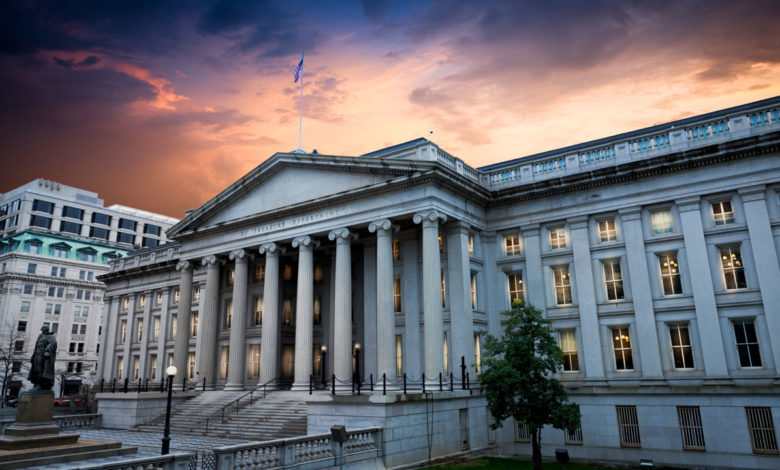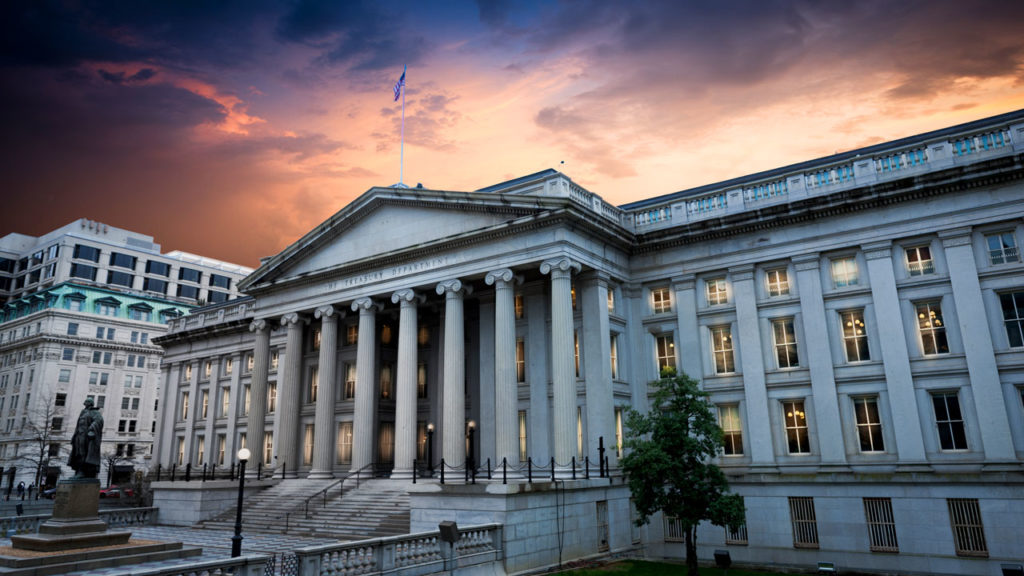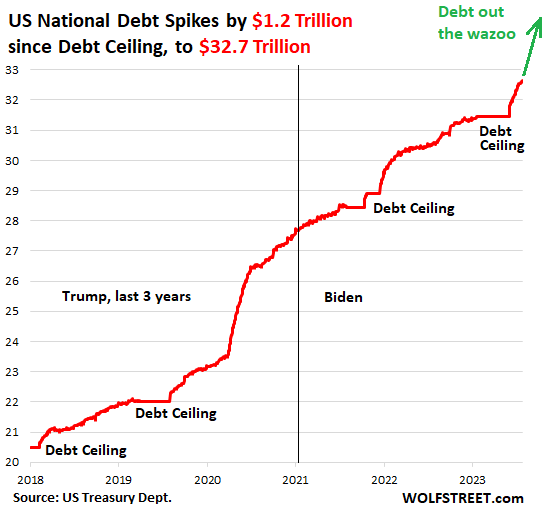The US Government Has Borrowed Over $1 Trillion Since the Debt Ceiling Deal

There’s a big problem that pretty much everybody is just ignoring.
In just two months since Congress reached a deal and suspended the debt ceiling for two years, the national debt has surged by a staggering $1.2 trillion.
Within a week of the debt ceiling suspension, the national debt cracked $32 trillion and as of July 28, it stood at $32.66 trillion.
I warned that we would see a big jump in the national debt with the passage of any debt ceiling deal. After nearly six months up against its borrowing limit, the federal government had some ground to make up. It needed to replenish cash reserves and unwind the extraordinary measures it took to keep the government running while it couldn’t borrow any money. But the pace of borrowing even surprises me.
Meanwhile, the US government continues to run massive deficits month after month. With three months left, the fiscal 2023 budget deficit had already eclipsed the massive 2022 shortfall.
Now, you might be thinking that with the spending cuts in the [misnamed] Fiscal Responsibility Act, Congress fixed this problem. But we live in an upside-down world where spending cuts mean spending still increases.
Even if Congress and the president manage to stick to the plan, the so-called spending cuts will not put a dent in actual total spending. That means we can expect massive deficits to continue month after month. And it’s only a matter of time before Congress and the Biden administration abandon the pretense of spending cuts to address the next crisis.
The government also faces declining tax receipts. The combination of big spending and declining revenue means more borrowing is coming down the pike.
There are two types of Treasury Department securities.
“Nonmarketable” securities included inflation-protected I-bonds that customers can buy directly from the Treasury, along with securities that entities such as government pension funds and the Social Security Trust Fund can hold. These do not trade on the open market and make up a relatively small ($6.9 trillion) amount of the total debt.
The Treasury finances the majority of the government’s debt with “marketable” Treasuries. These are sold through auctions and then trade on the public bond market, and include bonds and notes.
Marketable debt increased by $1.05 trillion since June 3 with $25.7 trillion now outstanding.
The borrowing isn’t going to slow down anytime soon. In fact, the Treasury Department upped its projection for third-quarter debt issuance to $1.01 trillion. That’s up from the $733 billion Q3 projection it imagined in May.
In the fourth quarter, the Treasury said it will pile another $852 billion onto the national debt. And as WolfStreet noted, “The way things are going, with these big upward revisions of borrowing estimates, along with the less than projected receipts and more than expected outlays, we can expect an upward revision of this $852 billion by the next update.”
The last time the Treasury issued securities at this pace was in 2020. But back then, the Federal Reserve had its big fat thumb on the bond market. The central bank was running quantitative easing and gobbling up Treasuries. Today, the Fed is shedding Treasuries at a pace of about $60 billion a month.
This raises a $1 trillion question: who is going to buy all of these notes and bonds?
With so many bonds flooding the market, it will almost certainly put more upward pressure on interest rates. The Treasury will have to sell bonds cheap enough with high enough yields to stimulate enough demand to absorb all the supply. Bond yields are inversely correlated with bond prices. That means as prices fall, interest rates rise.
This is not a good scenario for a government trying to borrow trillions of dollars. This is why I called the national debt a ticking time bomb.
And it will also put upward pressure on other interest rates, including those on corporate bonds, mortgages, auto loans, and other debt instruments. This will put even more strain on both consumers and corporations buried under piles of debt. The number of corporate defaults is already bigger than the total in 2022.
How this will play out remains unclear. But we can say this with confidence: government spending will continue to increase. The debt will continue to rise. And if the Fed keeps rates elevated, paying the interest on the national debt will become a big problem for Uncle Sam.
The national debt has been growing for so long that most people just shrug when we talk about it. Nobody seems particularly concerned outside of a handful of contrarians. Sure, most everybody recognizes that it might be a problem “down the road.” But they believe the road is long, so we can get away with continuing to kick the can. But mark my words, eventually, they will run out of road.
Call 1-888-GOLD-160 and speak with a Precious Metals Specialist today!
Buka akaun dagangan patuh syariah anda di Weltrade.
Source link








